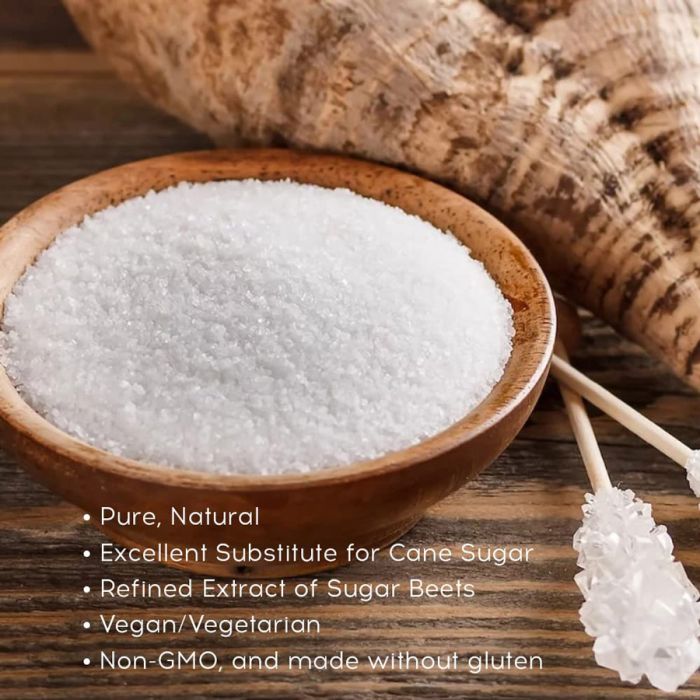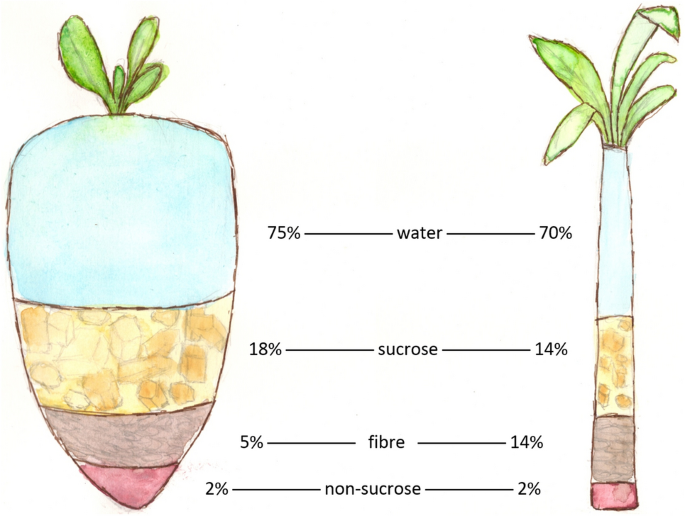Many people compare beet sugar vs cane sugar to understand their differences in taste and granulation.
Many people compare beet sugar vs cane sugar to understand their differences in taste and granulation.
Blog Article
Checking Out the Differences in operation and Benefits In Between Beet Sugar Vs Cane Sugar
In the cooking world, the choice in between beet sugar and cane sugar is not just regarding sweetness but entails a nuanced factor to consider of flavor, application, and influence. While both sugars originate from different plants, each undergoes unique manufacturing processes that discreetly influence their characteristics and viability for different meals. As cooks and customers progressively prioritize both the ecological and flavor accounts of their active ingredients, comprehending these differences comes to be vital. This exploration supplies understanding into exactly how each sugar kind can best improve culinary productions.
Origins and Manufacturing Processes of Beet and Cane Sugar

Walking stick sugar, on the various other hand, comes from the sugarcane plant, a tropical lawn indigenous to Southeast Asia but now cultivated in tropical zones worldwide - beet sugar vs cane sugar. The production of cane sugar begins with the harvesting of cane stalks, which are squashed to launch the juice.

Nutritional Content and Wellness Considerations

When comparing the dietary material of beet sugar and cane sugar, it becomes obvious that both kinds basically provide the exact same calorie worths, with about 16 calories per tsp and no substantial nutrient diversity. Each is composed nearly totally of sucrose, which is an easy carbohydrate that supplies fast energy yet lacks vitamins, minerals, or fiber. This resemblance encompasses their influence on health, especially worrying blood sugar level degrees. Both sugars, when eaten over, can add to elevated blood glucose levels, a danger aspect for diabetic issues and various other metabolic problems. Excessive intake can lead to weight gain and dental problems, as both sugars are equally cariogenic, promoting tooth decay. From a health and wellness point of view, regulating intake of any type of sort of sugar, whether from beet or cane, is recommended to prevent these prospective unfavorable impacts on well-being. Thus, neither holds a distinct advantage over the various other in regards to wellness advantages.
Flavor Accounts and Culinary Applications
Regardless of their comparable chemical frameworks, beet sugar and click this link cane sugar vary subtly in taste, which can affect their usage in different cooking contexts. Cane sugar usually carries a hint of molasses, even in its refined type, providing a cozy, caramel-like touch that boosts baked items, coffee, and chocolate-based dishes. On the various other hand, beet sugar is characterized by its highly refined, neutral taste, making it a flexible sweetener that does not change the taste accounts of meals.
Ecological Effect and Sustainability
While both beet and cane sugars are stemmed from plants, their environmental impacts differ considerably because of the unique techniques of growing and processing required for each. Sugar beet cultivation frequently involves substantial mechanization, which can enhance fossil fuel consumption and carbon discharges. Beetroots can be expanded in cooler environments and need less irrigation, potentially decreasing water usage compared to sugarcane. Sugarcane, on the other hand, is usually expanded in exotic regions where it relies heavily on watering and a much longer growing period, enhancing its water impact.
Additionally, the processing of sugarcane frequently produces a substantial quantity of waste, including bagasse, which, although useful as biofuel, often adds to air contamination if burned inefficiently. Sugar beet handling uses even more of why not try here the raw products, leading to less waste. Both markets face obstacles in lowering their ecological footprints, yet continuous innovations in farming methods and waste administration are intending to improve sustainability.
Economic Elements Affecting the Sugar Sector
The economic dynamics of the sugar sector are considerably affected by global market demands and profession plans. Elements such as tariffs, subsidies, and global trade arrangements play important duties fit the affordable landscape. For instance, in regions where sugarcane or sugar beet manufacturing is subsidized, producers may have an economic advantage that allows them to supply reduced prices on the international market. address This can develop disparities in productivity and market access for producers in countries without such subsidies.
Furthermore, fluctuations in global demand for sugar, affected by nutritional patterns and industrial use in food products, straight influence rates and manufacturing levels. beet sugar vs cane sugar. Weather also play a pivotal duty, as they can dramatically impact crop yields and, consequently, the supply chain. This irregularity presents a level of economic unpredictability that can bring about financial investment volatility in sugar production industries, influencing choices from growing to market method
Final Thought
In conclusion, both beet and cane sugar have unique qualities that fit different cooking requirements. While cane sugar imparts a rich taste suitable for enhancing baked goods, beet sugar's nonpartisanship is best for lighter dishes. Nutritional resemblances regardless of, their unique production procedures and environmental influences add complexity to the option between them. Therefore, understanding these distinctions helps cooks and consumers make notified choices that line up with their health, cooking, and moral preferences.
Report this page